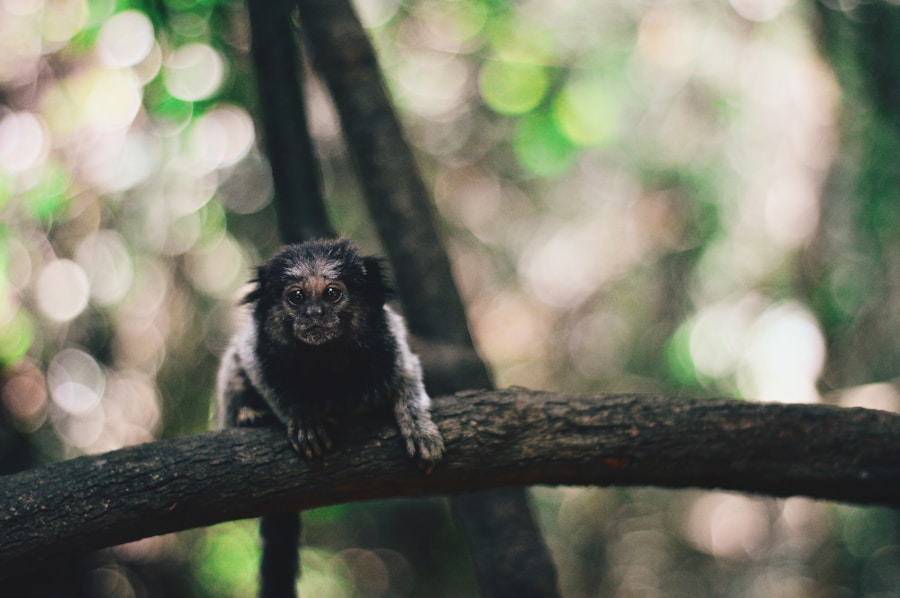ESCAPING THE NARCISSIST
Are you trapped in a toxic relationship? It's time to reclaim your life and find healing. ESCAPING THE NARCISSIST: HOW TO HEAL AND RECOVER FROM NARCISSISTIC ABUSE IN RELATIONSHIPS is your guide to breaking free and starting your journey towards recovery.
Don't let the pain control you any longer. Take the first step today and discover the strategies to overcome emotional abuse and rebuild your life. You deserve happiness and peace.
Start Your Healing Journey TodayThe legend of the flying monkeys has been a source of fascination and intrigue for centuries. Stories of these mythical creatures have been passed down through generations, captivating the imaginations of people around the world. From the pages of ancient texts to the silver screen, the flying monkeys have left an indelible mark on popular culture. But what is the truth behind the legend? Are flying monkeys real, or are they simply the stuff of fantasy?
The origins of the flying monkey legend can be traced back to various cultures and mythologies. In some traditions, they are depicted as mischievous creatures that serve a powerful sorcerer or witch. In others, they are seen as benevolent beings that possess magical powers. Regardless of the interpretation, one thing is clear: the flying monkeys have captured the imagination of people from all walks of life. But are they real? The answer may surprise you.
The Physiology of Flying Monkeys: How Do They Defy Gravity?
The physiology of flying monkeys is a topic that has puzzled scientists and researchers for centuries. How do these creatures defy gravity and take to the skies with such ease? The answer lies in their unique anatomy and physiology. Unlike their non-flying counterparts, flying monkeys possess a set of wings that allow them to soar through the air with grace and agility. These wings are supported by a strong skeletal structure and powerful muscles, enabling them to achieve sustained flight over long distances. Additionally, their lightweight bodies and streamlined shape contribute to their aerodynamic capabilities, allowing them to navigate through the air with precision and speed.
But perhaps the most fascinating aspect of their physiology is their ability to harness the power of the wind. Flying monkeys are adept at using air currents to their advantage, allowing them to glide effortlessly through the sky with minimal effort. This remarkable adaptation sets them apart from other creatures and has earned them a reputation as some of the most skilled aviators in the animal kingdom. While much remains to be discovered about the physiology of flying monkeys, one thing is certain: their ability to defy gravity is nothing short of extraordinary.
The Habitat of Flying Monkeys: Where Can They Be Found?
The habitat of flying monkeys is as diverse as it is vast, encompassing a wide range of ecosystems and environments. From lush rainforests to arid deserts, these remarkable creatures have adapted to thrive in a variety of landscapes. In some regions, they can be found soaring through the canopies of dense jungles, while in others, they make their homes in rocky cliffs and mountainous terrain. Their ability to adapt to different habitats has allowed them to establish a widespread presence across the globe, making them one of the most versatile and resilient species in the animal kingdom.
One of the most notable habitats for flying monkeys is the tropical rainforest, where they play a vital role in maintaining the delicate balance of this complex ecosystem. Here, they can be found foraging for food among the dense foliage, using their keen senses and agile movements to navigate through the treetops with ease. Their presence in these habitats is crucial for the dispersal of seeds and pollination of plants, making them an integral part of the intricate web of life that thrives in these lush environments. As our understanding of their habitat continues to grow, so too does our appreciation for the vital role that flying monkeys play in maintaining the health and diversity of their ecosystems.
The Behavior of Flying Monkeys: What Makes Them Unique?
The behavior of flying monkeys is as complex and diverse as their habitats, reflecting a rich tapestry of social interactions and adaptive strategies. These remarkable creatures are known for their highly social nature, forming tight-knit groups that work together to ensure their survival and well-being. Within these groups, individuals display a wide range of behaviors, from playful interactions to complex communication and cooperation. Their ability to work together as a cohesive unit sets them apart from other species and has earned them a reputation as some of the most intelligent and adaptable creatures in the animal kingdom.
One of the most fascinating aspects of their behavior is their unique method of communication. Flying monkeys are known for their diverse vocalizations and body language, which they use to convey information and maintain social bonds within their groups. Through a combination of calls, gestures, and facial expressions, they are able to express a wide range of emotions and intentions, allowing them to navigate complex social dynamics with ease. Additionally, their ability to cooperate and coordinate their movements during flight is a testament to their remarkable behavioral flexibility and adaptability. As our understanding of their behavior continues to grow, so too does our appreciation for the intricate social structures and adaptive strategies that make flying monkeys truly unique.
The Role of Flying Monkeys in their Ecosystem: A Vital Link
The role of flying monkeys in their ecosystems is one of great importance, as they play a vital role in maintaining the delicate balance of these complex environments. As highly skilled aviators, they are able to access hard-to-reach areas within their habitats, allowing them to disperse seeds and pollinate plants that would otherwise be inaccessible to other creatures. This unique ability makes them essential for the health and diversity of their ecosystems, as they contribute to the regeneration and growth of plant species that form the foundation of these intricate food webs.
In addition to their role as seed dispersers and pollinators, flying monkeys also play a crucial role in controlling insect populations within their habitats. By preying on insects such as beetles, caterpillars, and ants, they help to regulate these populations and prevent them from overwhelming plant species. This in turn helps to maintain the overall health and balance of their ecosystems, ensuring that they remain resilient and diverse. As our understanding of their role in these environments continues to grow, so too does our appreciation for the vital link that flying monkeys provide within these intricate ecosystems.
The Cultural Significance of Flying Monkeys: Myths and Legends
The cultural significance of flying monkeys spans across various traditions and mythologies, where they are often depicted as powerful and enigmatic creatures with mystical abilities. In some cultures, they are revered as symbols of wisdom and strength, while in others they are feared as harbingers of misfortune and chaos. Regardless of the interpretation, one thing is clear: flying monkeys hold a special place in the hearts and minds of people around the world.
In many myths and legends, flying monkeys are associated with magic and sorcery, often serving as loyal companions to powerful wizards or witches. Their ability to defy gravity and soar through the skies has earned them a reputation as otherworldly beings with supernatural powers. In some stories, they are depicted as guardians of ancient secrets or protectors of sacred places, adding to their mystique and allure. As these myths and legends continue to be passed down through generations, so too does our fascination with these captivating creatures.
Conservation Efforts for Flying Monkeys: Protecting a Rare Species
Conservation efforts for flying monkeys are crucial for ensuring the survival and well-being of this rare and remarkable species. As human activities continue to encroach upon their habitats, flying monkeys face numerous threats that jeopardize their long-term viability. Habitat loss, deforestation, and illegal wildlife trade are just a few of the challenges that they must contend with in order to thrive in the wild. In response to these threats, conservation organizations and researchers have been working tirelessly to protect these extraordinary creatures and preserve their habitats for future generations.
One of the key components of conservation efforts for flying monkeys is habitat protection and restoration. By establishing protected areas and implementing sustainable land management practices, we can help to safeguard the diverse habitats that these creatures rely on for survival. Additionally, efforts to combat illegal wildlife trade and poaching are essential for preventing further declines in their populations. Through education and outreach initiatives, we can raise awareness about the importance of protecting flying monkeys and inspire others to join us in our efforts.
In conclusion, flying monkeys are truly remarkable creatures that have captured the imagination of people around the world for centuries. From their mysterious origins to their vital role in maintaining healthy ecosystems, these creatures continue to fascinate and inspire us with their unique abilities and behaviors. As we continue to unravel the mysteries surrounding flying monkeys, it is essential that we work together to protect and preserve these extraordinary creatures for future generations to appreciate and admire. Through conservation efforts and a deeper understanding of their significance, we can ensure that flying monkeys continue to soar through the skies for years to come.


